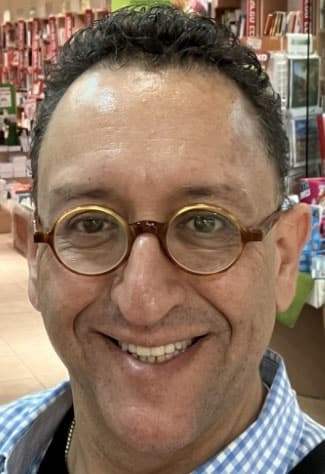How do we preserve tradition while simultaneously introducing new ideas? Can worldviews from the past coexist with those of the new generation? From Shabbat tables and Passover seders to public forums and debates, we find an ever-widening generation gap in the Jewish world on issues ranging from halachic flexibility to support for Zionism and Israel. Can we strike a balance between past and present voices? One prominent young rabbi in Israel thinks so.
His name is Benny Lau. You probably recognize his family name from his uncle, Rabbi Israel Meir Lau, the Holocaust survivor who rose to the ranks of chief rabbi of Israel, and from his cousin David, the current Ashkenazi chief rabbi of Israel. Without holding official “chief rabbi” positions, Benny is no less a public figure. A prominent pulpit rabbi, brilliant educator, and outspoken public intellectual and rabbinic voice, he has written several best-selling books on various Jewish topics and is the most sought-after rabbinic figure by Israeli newspapers, television and radio stations, and various organizations in Israel and around the world.
Some of Benny Lau’s most creative writing is found in “Etnachta,” a collection of thought-provoking essays on the weekly Torah portion. His essay on Parashat Pekudei addresses the generation-gap issue through the décor on the hem of the High Priest’s robe. The robe’s hem featured pomegranates made of blue, purple and crimson yarns, with bells of gold in between the pomegranates. This produced a unique ringing sound, making it known to God and the community that the High Priest had officially entered the sacred chambers to perform the service.
The commentator Nachmanides (Ramban) described how the pomegranates and bells actually worked:
“The bells were placed inside the pomegranates before they were sewn onto the robe, and once the bells were inside the pomegranates, they were then sewn onto the edges of the robe.”
Nachmanides’ description of the bells within the pomegranates aroused the imagination of many subsequent commentators, including one who was overheard by Benny Lau:
“I recently heard a sermon on Nachmanides’ description of the High Priest’s robe. In this sermon, the rabbi described the pomegranate as a symbol of fullness: It is heavy, full of content and does not make any noise. Its fullness is symbolic of the world of wisdom and mitzvot. In fact, when our sages sought a metaphor for being ‘filled with mitzvot,’ they used the pomegranate. The pomegranate represents the older generation, overflowing with knowledge and filled with content. The bell, on the other hand — a symbol of noise — makes its noise from an empty vessel. The bell is built from an empty space with a tongue in the middle that creates the noise. It is very sensitive to the slightest wind and hastily rings and makes noise. The rabbi then linked the two — the pomegranate and the bell — to the sounds created by the two on the High Priest’s robe as he enters the sanctuary, of which is said: The sound of it is heard when he comes in the sanctuary before God. If the bells are disconnected from the pomegranates, then they can ring and ring endlessly, but they will not be part of the High Priest’s robe, and will therefore not be heard. The true strength of the bells ringing is only realized when they are connected to the pomegranates. When they are incorporated within the pomegranates, then their voice is heard.”
Benny Lau boldly takes this sermon one creative step further:
“Clearly, I think that one can also reverse this metaphoric explanation and say that the pomegranates must also make room for the bells to exist within them. The High Priest cannot enter the sanctuary with the pomegranates alone. Only when the pomegranates give room to the bells can they then enter the sanctuary of God. The sensitivity of the bells creates the proper musical notes that the High Priest — the representative of the entire community — makes heard in heaven when he enters the sanctuary. The heavy and full pomegranate needs the bell, and together they awaken true hope. This dual interpretation expresses the generational dispute between the older generation (the pomegranates) and the younger generation (the bells). The wisdom of this lesson lies in seeking to incorporate the voices of one generation within the other.”
Only when the “sounds from the bells” and the “seeds of the pomegranates” listen to each other and seek to coexist within the same community can our voices be heard by God. This spiritual message from Rabbi Benny Lau is not only a creative reading of Torah sources, it’s a real-life challenge to all Jewish communities everywhere.























 More news and opinions than at a Shabbat dinner, right in your inbox.
More news and opinions than at a Shabbat dinner, right in your inbox.